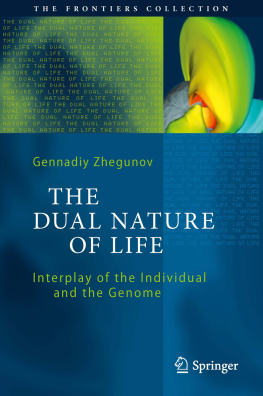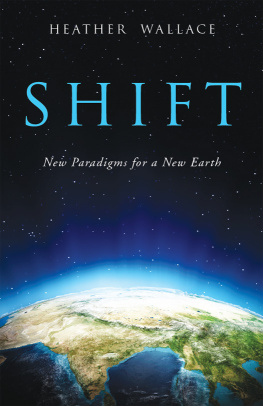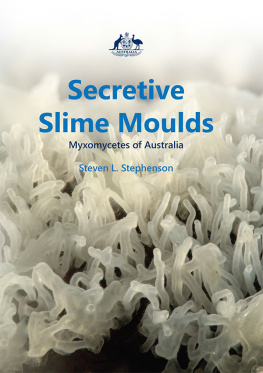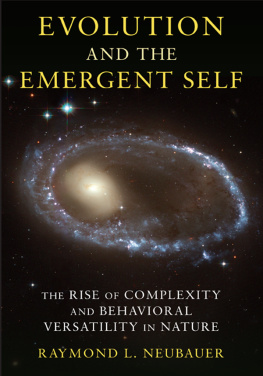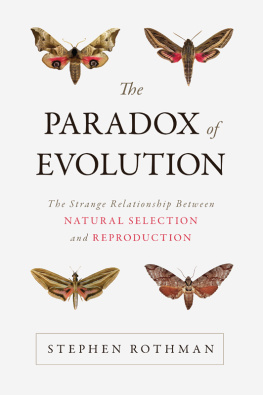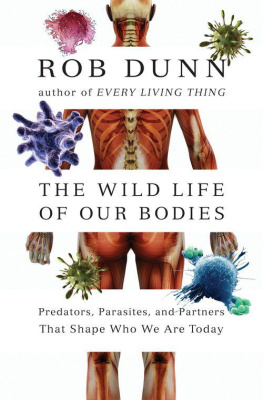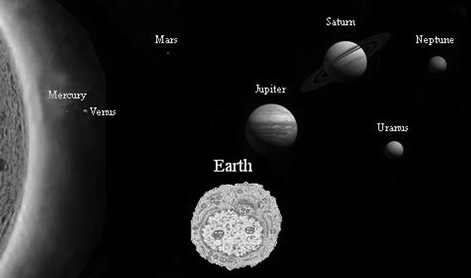Gennadiy Zhegunov The Frontiers Collection The Dual Nature of Life 2012 Interplay of the Individual and the Genome 10.1007/978-3-642-30394-4_1 Springer-Verlag Berlin Heidelberg 2012
1. Life on Earth
1.1 Key Features of Life
Currently, the Earth is the only stellar body known to contain life as we have defined it (see Fig. ). Despite the fact that life on Earth is a unique phenomenon in our Solar System, it is very widespread and complexly diverse on this planet. It appeared at a definite stage during the Earths development, approximately 3.5 billion years ago, as a result of spontaneous chemical interactions that led to unique organizations of matter.
Fig. 1.1
Is there life on other planets? in our solar system, life prospers only on planet Earth which is represented as the component that serves as lifes primary constituent: a single cell
Life has a cellular basis and is extremely widely distributed over the entire planet, despite dramatically varied physical and chemical conditions in the external environment. As a result of adaptation and evolution, living beings are very diverse in terms of their size, structural complexity, multicellularity, level of organization, features of metabolism, and vital functions. Such variability allows them to occupy practically any ecological niche on Earth. Living organisms can live above, in, and under the ground, or in water, air, rocks, other organisms, and in extreme conditions such as in ice or hot geysers. They can be found under enormous pressures many kilometres beneath the oceans and at very high altitudes in the anoxic atmosphere at the edge of space. Manifestations of life can also be observed at extremely low temperatures (50 C), and at very high temperatures (up to +100 C). For example, some molds and fungi ( Aspergillus , Cladosporium , Helmintosporium ) are known to live on the cooling covers of nuclear reactors, surviving colossal doses of radiation.
One can say that the Earth is simply contaminated with so much life that practically nothing can destroy it on our planet. The building blocks of living organisms are nucleic acid molecules (NA) and proteins, the properties and functions of which (in an aqueous environment) account for lifes immense diversity. Only a catastrophe of cosmic proportions could annihilate life, such as a cataclysmic event that causes the temperature on the Earths surface to rise above +100 C leading to the disappearance of water. Man, despite his global impact on animate and inanimate Nature, cannot destroy the entirety of life. Even nuclear war and the consequent nuclear winter could destroy only intelligent life and an indeterminate number of other different types of organisms. Nevertheless, many viruses, microorganisms, and more complex life forms inhabiting the depths of the Earth or the oceans would survive this local catastrophe almost without any problems. Thus, life as a qualitatively special form of matter will exist as long as the conditions required for the formation of nucleic acids and proteins in aqueous solutions remain on Earth.
The fact that life exists only on Earth is due to the Earths specific location in the Solar System and its size. Only at its current position and distance from the Sun are the temperature and other physical conditions needed for the existence of organic substances, as well as liquid water, optimal. These factors in turn make it possible for nucleic-protein bodies to exist. The size of the Earth is also ideal for gravitational retention of the atmosphere, which ensures the relative stability of the physicochemical surroundings of living organisms. The atmosphere is not only an umbrella against damaging ultraviolet radiation and meteorite bombardment, but it also helps to maintain the Earths surface temperature between 0 and 100 C. Water remains liquid (but not solid or gaseous) in this particular temperature range, which is a necessary condition for the manifestation of life. Although the substrates of living thingsnucleic acids and proteinscan retain their vital potency at lower temperatures, even at temperatures approaching absolute zero, the commencement, manifestation, and proliferation of life nevertheless requires liquid water.
Some forms of life can be unnoticeable or even completely absent. For example, various primitive organisms can completely halt their vital processes, resulting in a state called anabiosis. Unicellular organisms, small invertebrates, spores, and seeds of plants can remain in this state for many years. Anabiosis makes possible the prolonged preservation of an organisms structure, and more importantly, the maintenance of the structural and functional state of its DNA and proteins during extreme conditions such as low temperatures and complete dehydration. This is why, upon the return of normal conditions, they can restore all the processes of their vital functions and subsequently revive . Viruses are also capable of staying in anabiosis for a long time while maintaining the integrity of their DNA, and only manifest their viral properties after entering a host cell. These facts do not eliminate, in principle, the possibility of the existence of latent life on other cosmic bodies (in the form of stable nucleic acids), nor the possibility of Earths colonization by such beings billions of years ago.
The life of any given organism is a finite, unidirectional process. A process is a course for the development of some phenomenon, a successive change of developmental states and stages. In this case, it is the process of the appearance, development, and extinction of previous generations of individuals and the formation of new ones. The process of life has one-way directionalityfrom the past, through the present, to the future. This is implemented in the irreversible phase changes of ontogenesis intrinsic to every living being. Generations of organisms are continuously replaced by others. The alternation of generations is a striking phenomenon that is characteristic only of communities of living organisms, and it is an amazing property peculiar to life. It started from the moment of the origin of living bodies and it continues to this day with no tangible end in sight. Life, therefore, is a continuous process, because in the course of reproduction, eternal genomes are transmittedwith slight changesfrom one mortal body to the next, and from one generation to another, over millions of years and billions of generations.
Every organism as a carrier of life exists only as a constituent of an ecosystem and its environment. Only in the organismenvironment system does the redistribution of matter and energy take place. That is why it is necessary to consider living matter and the sphere of its existence as a large, integrated system. Based on the ongoing processes of constant redistribution of energy and matter within such a system, life can be considered not so much as the existence of autonomous organisms, but rather as a planetary system in which these organisms are just constituents.

